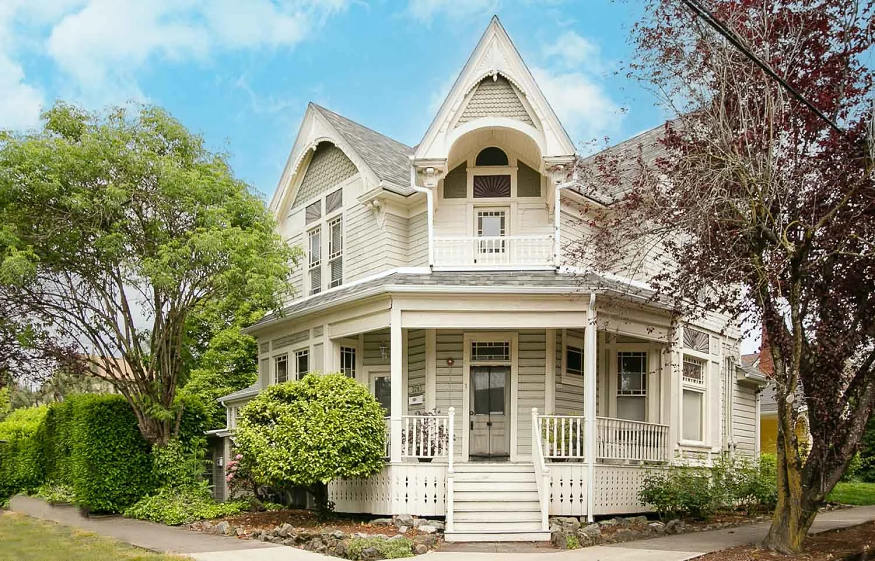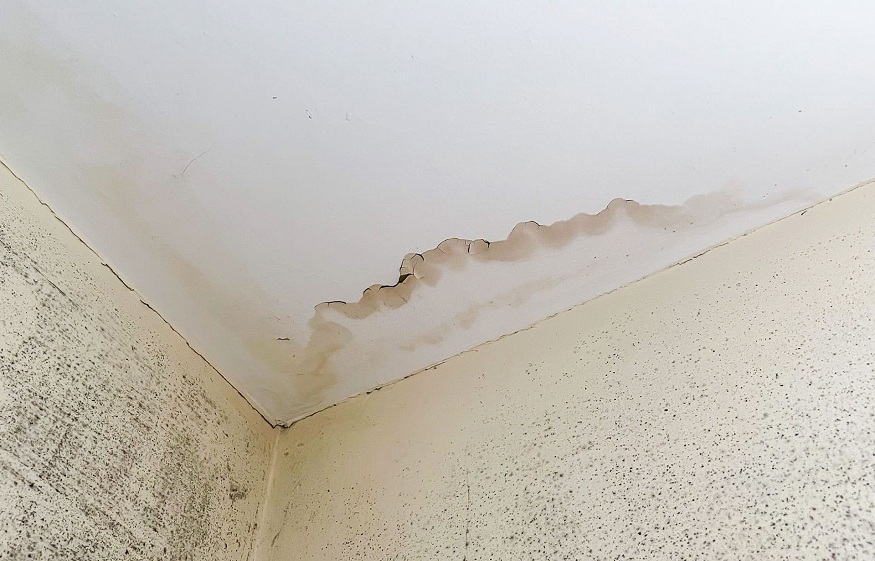
Oregon has a way of capturing the imagination. Its rugged coastline, green forests, and lively cities blend outdoor adventure with modern convenience. Portland offers food trucks, craft breweries, and a vibrant arts and culture scene you can feel on every street. Cannon Beach delivers postcard-perfect views, while the Cascade Mountains invite hikers, skiers, and nature lovers year-round.
Cities like Portland, Eugene, and Salem are hubs for professionals, offering opportunities in tech, healthcare, and sustainable industries. Smaller towns such as Bend and Ashland attract those seeking mountain living paired with a strong arts community. Whether you crave the energy of city life or the peaceful pace of a small town, Oregon has something for everyone.
However, living in Oregon isn’t just about scenic views and endless coffee shops. Housing costs, taxes, and daily expenses often run higher than people expect. This makes many newcomers weigh lifestyle benefits against financial realities.
Why Do People Love Living in Oregon?
Oregon’s appeal goes beyond its famous landmarks—it offers an active lifestyle and diverse experiences. In Hood River, locals windsurf on the Columbia River Gorge by morning and savor wine at family-owned vineyards by evening. Cannon Beach, known for its stunning views of Haystack Rock, also features tide pools filled with starfish and sea anemones, adding a unique charm to the coast.
Nature lovers will find an endless playground in Oregon. From exploring the deep blue waters of Crater Lake in the morning to catching a Portland Timbers game in the evening, the variety is unmatched. Silver Falls State Park’s iconic trail features ten waterfalls, and the Oregon Dunes provide a thrilling spot for sandboarding. With so much to explore, you can truly experience the best of nature in one day.
But what truly sets Oregon apart is its commitment to sustainability and community. The state invests in green living, local food, and fostering connections among its residents. For many, this dedication to environmental and social responsibility is a key reason to make Oregon home.
What Is the Cost of Living in Oregon?
The cost of living in Oregon is 17% higher than the national average. Housing and transportation are the biggest factors pushing budgets upward.
Housing
In July 2025, the median home price was $517,200 compared to the U.S. median of $420,000. Portland remains the priciest market, while cities like Salem and Springfield offer more budget-friendly options.
Oregon’s rental market is also above average. The statewide rent sits at $1,773 per month, with Portland averaging $1,756. Salem comes in lower at $1,471, while Eugene is closer to $1,852.
Utilities
The average monthly utility bill is about $341, which includes electricity, gas, water, and internet. Larger homes in cities see higher costs, while smaller towns tend to be more affordable.
Groceries and Food
Groceries cost about 6% more than the national average. Portland households often spend more due to the demand for organic and local options. Dining out reflects the same trend, averaging $20 per meal in Portland and $15 in smaller towns.
Healthcare
Healthcare in Oregon is about 2% more expensive than the national average, with higher costs concentrated in urban centers.
Transportation
Residents spend about 23% more than the national average on transportation. High gas prices, averaging $4.00 per gallon, and longer commutes are the main reasons.
Taxes
Oregon has no statewide sales tax, but income tax rates reach up to 9.9%. Property taxes average 0.77% of assessed value, slightly below the U.S. average.
For homebuyers, calculating figures with Oregon’s mortgage calculator on Houzeo, America’s premier home-buying platform, can significantly clarify budgeting decisions. It helps estimate monthly payments while considering Oregon’s specific property taxes, insurance requirements, and HOA fees common across many communities. Start planning your budget today!
Oregon’s Housing Market: Current Scenario
Oregon’s housing market remains defined by strong demand and limited supply. The state hasn’t built enough homes to keep up with population growth, which drives competition.
Market Dynamics
Inventory has increased slightly in 2025, giving buyers more choices compared to the frenzied 2021–22 period. Still, demand from remote workers and out-of-state movers continues to push prices upward.
Buyer and Renter Behavior
First-time buyers often look beyond Portland for affordability, turning to cities like Salem, Springfield, and Medford. Renters are also exploring smaller towns and suburbs to avoid high costs. College towns such as Eugene and Corvallis remain popular due to steady student demand.
Construction and Development
Builders are expanding suburban communities in Washington County near Portland and Lane County near Eugene. Many new projects emphasize energy efficiency, solar power, and community features like EV charging stations.
Regional Differences
- Urban Centers: Portland offers condos, renovated historic homes, and cultural amenities close to jobs.
Suburbs: Beaverton and Lake Oswego attract families with strong schools and larger homes. - Small Towns & Rural Areas: Hood River, Ashland, and Bend provide scenic living with more affordable homes and close-knit communities.
Housing Variety and Styles
Oregon’s housing market offers a wide variety of styles, reflecting its diverse geography and cultural heritage. In Portland, a blend of Craftsman bungalows and modern condos captures the city’s balance between history and innovation, while Bend is known for its cozy mountain cabins. Coastal towns like Lincoln City feature charming cottages, perfect for those who enjoy living by the water.
Growth policies in Oregon focus on preserving farmland and open spaces, with most new development directed into cities. This strategy creates a clear distinction between bustling urban hubs and tranquil rural communities, giving homebuyers the option to enjoy either a dynamic city life or peaceful countryside living.
Career, Lifestyle, and Top Places to Call Home
Oregon blends career opportunities with lifestyle quality, offering a balance between work and the outdoors.
Portland: Tech Innovation with Cultural Depth
Portland anchors the economy with Nike, Intel, and a strong startup scene. Jobs span tech, healthcare, and design. Neighborhoods like Pearl District and Alberta bring a walkable culture, while families often choose Beaverton or Lake Oswego for schools and parks.
Eugene: College Town Energy
Eugene revolves around the University of Oregon, supporting education, research, and healthcare jobs. The lifestyle emphasizes community and outdoor recreation, with South Hills popular among families.
Salem: Government Hub with Family Appeal
Salem’s economy centers on state government, healthcare, and agriculture. Families choose it for affordability and stability, with neighborhoods like West Salem offering space and schools.
Bend and Smaller Cities
Bend thrives on outdoor companies, tourism, and remote work. Smaller cities like Ashland, Hood River, and Corvallis offer culture, education, and recreation. These places appeal to those who value lifestyle as much as income.
Tips for Homebuyers in Oregon
- Research Natural Disaster Insurance: Oregon faces earthquake, wildfire, and flood risks depending on location. Policies can add $500 to $2,000 annually.
- Look Beyond Portland for Value: Suburbs and smaller cities like Salem, Corvallis, and Medford provide more affordable homes.
- Explore Green Developments: New builds often include energy-efficient features and may qualify for rebates.
- Use Oregon-Specific Homebuyer Programs: State and county programs offer down payment assistance and rebates for energy-efficient homes.
- Understand Oregon’s Tax Structure: The state has no sales tax but higher income taxes. Property taxes vary by county, with Portland on the higher end.
Is Oregon a Good Place to Live?
Oregon attracts people with its natural beauty, vibrant culture, and focus on sustainability. Living here does come at a higher cost, but for many, the lifestyle makes the trade-off worthwhile. Smaller cities and suburbs often provide balance, with more affordable homes and easy access to nature.
Looking for homes for sale in Oregon? Browse thousands of listings on your mobile device with Houzeo, America’s best home buyer app. Download it from the Apple App Store or Google Play Store to start your search today.





